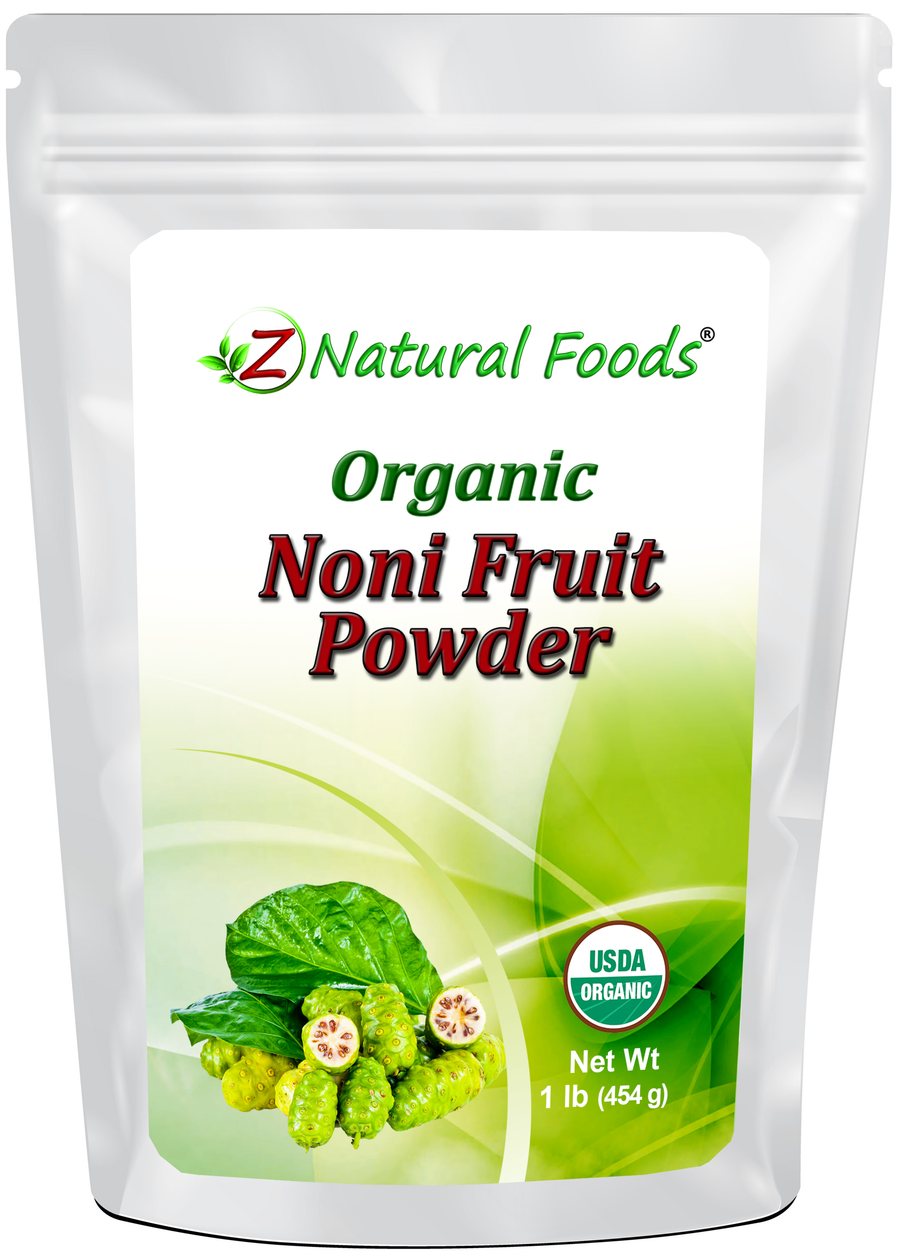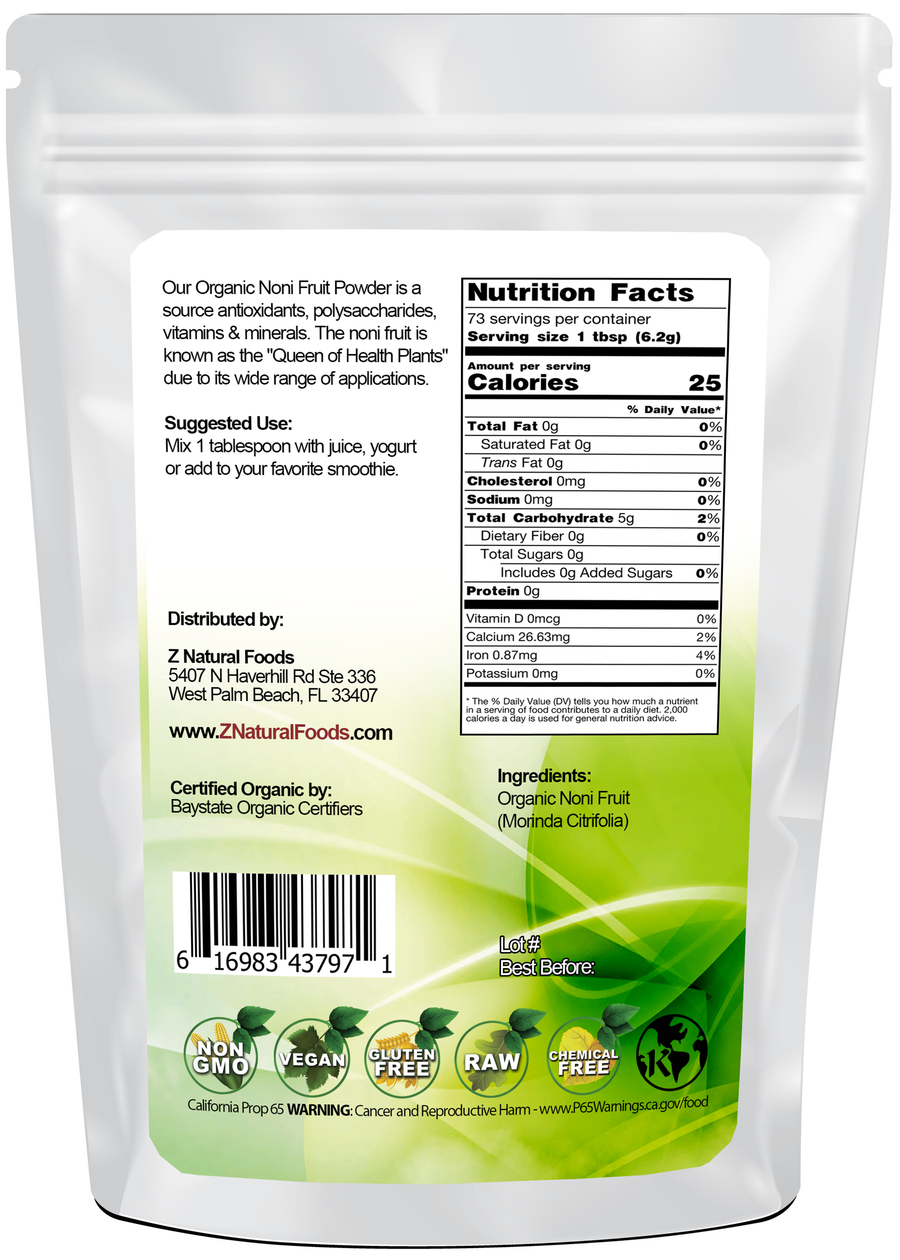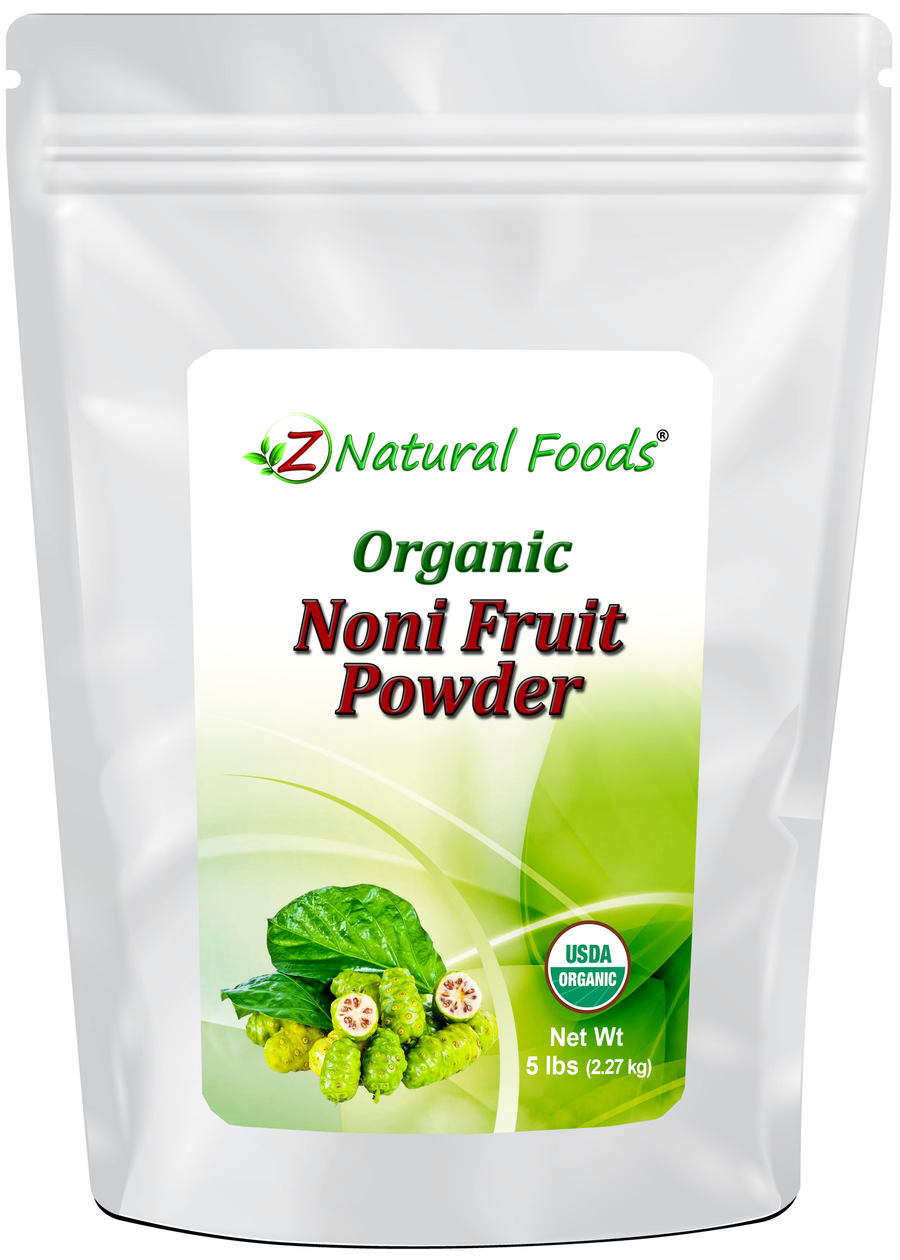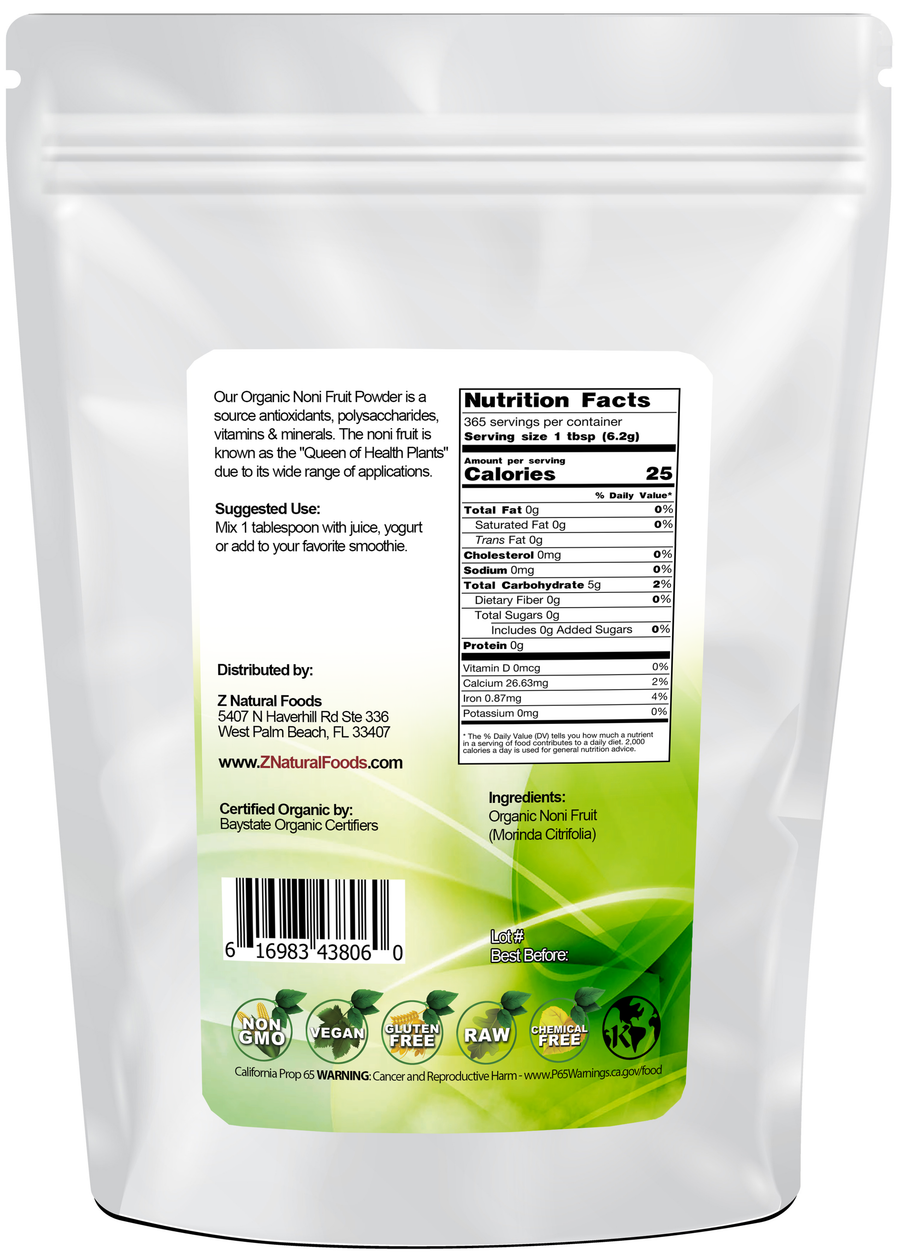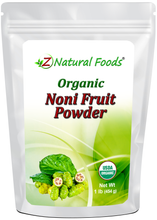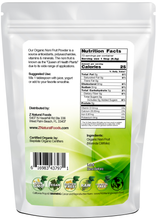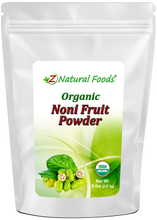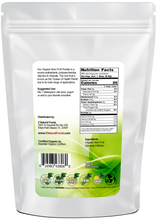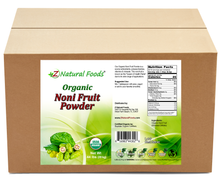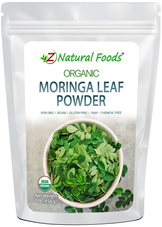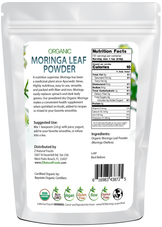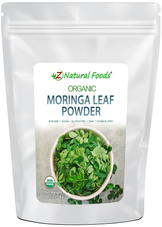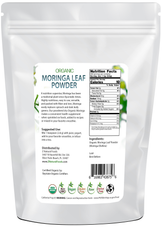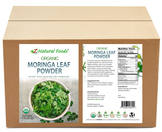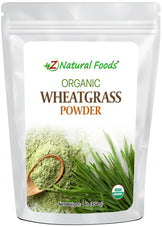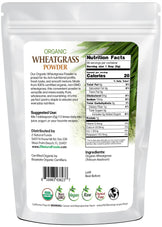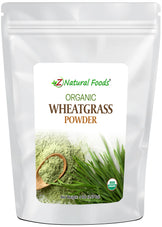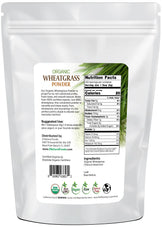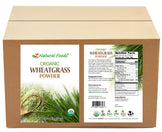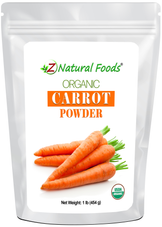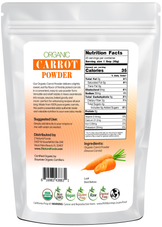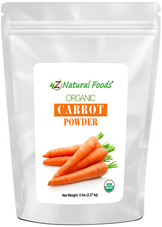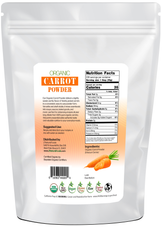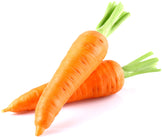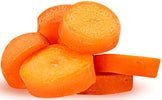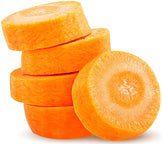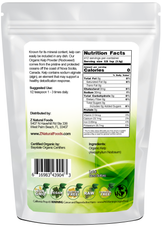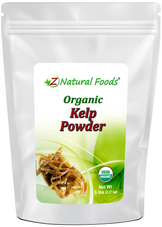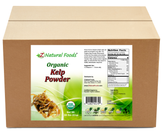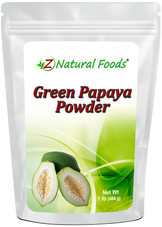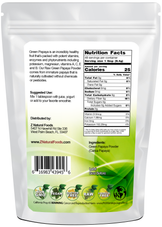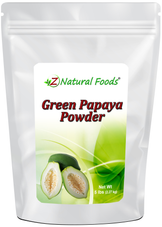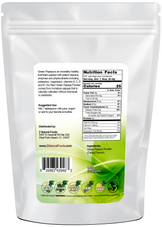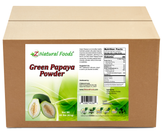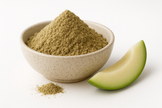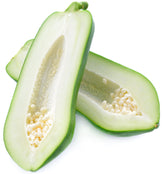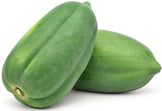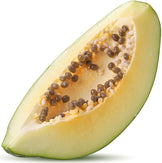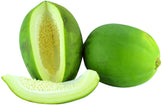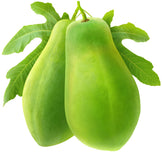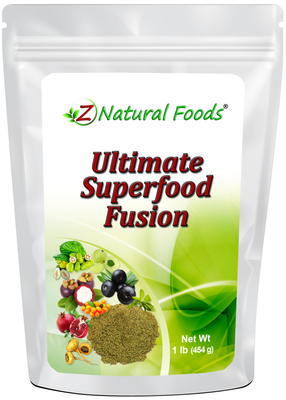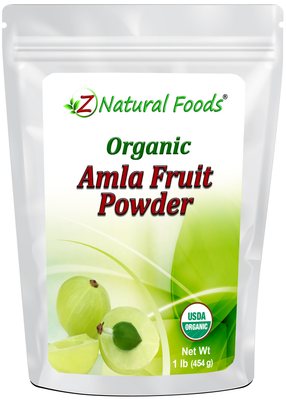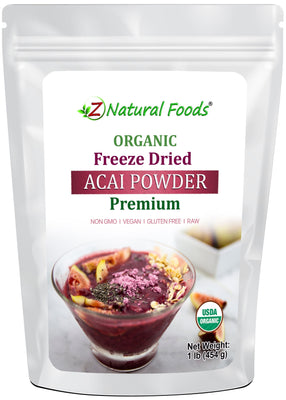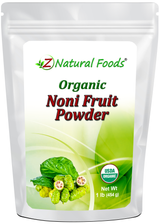About Product
Organic Noni Fruit Powder is made from dried and finely ground noni fruit, also known as Indian mulberry. Native to Southeast Asia and Polynesia, this tropical fruit has a long tradition of use and is valued for its distinct, slightly bitter taste and strong aroma.
Convenient and shelf-stable, noni powder can be blended into smoothies, juices, teas, or herbal preparations. Its unique flavor makes it a versatile ingredient for those looking to explore traditional tropical fruits in modern recipes.
Some research suggests that Noni may contain the following constituents:
- Minerals: Magnesium, Phosphorus
- Vitamins: Ascorbic acid, Thiamin, Riboflavin, Niacin, Beta-carotene
- Acids: Acetic, 2-methyl propanoic, Butanoic, 2-methylbutanoic, Hexanoic, 3-methyliopropanoic, Benzoic, Glucuronic, Caproic, Caprylic, Heptanoic, Okadaic, Octanoic, Hexanedioic, Nonanoic, Decanoic, Undecanoic, Lauric, Myristic, Palmitic, Linoleic, Elaidic, Oleic, (Z, Z, Z)-8,11,14-eicosatrienoic
- Alcohols: 1-Butanol, 3-Methyl-3-buten-1-ol, 3-Methyl-2-buten-1-ol, 1-Hexanol, Benzyl alcohol, Eugenol, (Z, Z)-2-5-Undecadien-1-ol
- Esters: Methyl hexanoate, Methyl 3-methylthio-propanoate, Ethyl hexanoate, Methyl octanoate, Ethyl octanoate, Methyl decanoate, Ethyl decanoate, Methyl palmitate, Ethyl palmitate, Methyl elaidate, Methyl oleate
- Ketones: 3-Hydroxy-2-butanone, 2-Heptanone
- Lactones: (E)-6-Dodecano-y – lactone, (Z)-6-Dodeceno-y – lactone
- Miscellaneous compounds: Hexanamide, Proxeronine, Limonene, (Ethylthiomethyl) benzene, Scopoletin, Vomifoliol, Aucubin, Asperuloside
Generations of tradition back the healthful benefits of the Noni fruit, the confirmation of scientific research, and the enthusiastic loyalty of consumers all over the globe. Our whole raw fruit Noni Powder is Certified Organic and GMO-free.
This product is 100% natural and minimally processed. Taste, smell, texture, and color vary from batch to batch.
Suggested Uses: Mix one tablespoon with juice yogurt, or add to your favorite smoothie. Try our Organic Noni Fruit Powder blended with protein, ice, almond milk, and juice for a quick, healthy start to your day.
Mixing Suggestions: To increase flavor and nutritional profile, combine our organic blueberry and strawberry powders in a smoothie.
Certifications: Certified USDA Organic.
Botanical Name: Morinda citrifolia.
Other Names: Indian Mulberry, hog apple, canary wood.
Parts Used: Whole, Noni fruit.
Ingredients: Raw Noni Fruit.
Origin: Grown and dried in India and packaged with care in Florida, USA.
* Product packaging, pictures, and origin may vary.
Sources & References
1. Nelson, SC (2006-04-01). "Species Profiles for Pacific Island Agroforestry: Morinda citrifolia (noni)". Traditional Tree Initiative.
2. Plants by Common Name "“ James Cook University
3. Xavier Romero-Frias, The Maldive Islanders, A Study of the Popular Culture of an Ancient Ocean Kingdom, Barcelona 1999, ISBN 84-7254-801-5
4. Krauss, BH (1993). Plants in Hawaiian Culture. Honolulu: University of Hawaii Press.[page needed]
5. Morton, Julia F. (1992). "The ocean-going noni, or Indian Mulberry (Morinda citrifolia, Rubiaceae) and some of its "colorful" relatives". Economic Botany 46 (3): 241"“56. doi:10.1007/BF02866623.
6. Cribb, A.B. & Cribb, J.W. (1975) Wild Food in Australia. Sydney: Collins.[page needed]
7. Jones, C.D. (1998). "The Genetic Basis of Drosophila sechellia's Resistance to a Host Plant Toxin". Genetics 149 (4): 1899"“1908.
8. Nelson, Scot C. (2006) "Nutritional Analysis of Hawaiian Noni (Noni Fruit Powder)" The Noni Website. Retrieved 15-06-2009.
9. Nelson, Scot C. (2006) "Nutritional Analysis of Hawaiian Noni (Pure Noni Fruit Juice)" The Noni Website. Retrieved 15-06-2009.
10. World's Healthiest Foods, in-depth nutrient analysis of a raw orange
11. Saleem, Muhammad; Kim, Hyoung Ja; Ali, Muhammad Shaiq; Lee, Yong Sup (2005). "An update on bioactive plant lignans". Natural Product Reports 22 (6): 696. doi:10.1039/b514045p. PMID 16311631.
12. Deng, Shixin; Palu, "˜Afa K.; West, Brett J.; Su, Chen X.; Zhou, Bing-Nan; Jensen, Jarakae C. (2007). "Lipoxygenase Inhibitory Constituents of the Fruits of Noni (Morindacitrifolia) Collected in Tahiti". Journal of Natural Products 70 (5): 859"“62. doi:10.1021/np0605539. PMID 17378609.
13. Lin, Chwan Fwu; Ni, Ching Li; Huang, Yu Ling; Sheu, Shuenn Jyi; Chen, Chien Chih (2007). "Lignans and anthraquinones from the fruits ofMorinda citrifolia". Natural Product Research 21 (13): 1199"“204. doi:10.1080/14786410601132451. PMID 17987501.
14. Levand, Oscar; Larson, Harold (2009). "Some Chemical Constituents of Morinda citrifolia". Planta Medica 36 (06): 186"“7. doi:10.1055/s-0028-1097264.
15. Mohd Zin, Z.; Abdul Hamid, A.; Osman, A.; Saari, N.; Misran, A. (2007). "Isolation and Identification of Antioxidative Compound from Fruit of Mengkudu (Morinda citrifoliaL.)". International Journal of Food Properties 10 (2): 363"“73. doi:10.1080/10942910601052723.
16. Wang MY, West BJ, Jensen CJ, Nowicki D, Su C, Palu AK, Anderson G (2002). "Morinda citrifolia (Noni): a literature review and recent advances in Noni research". Pharmacol Sin 23 (12): 1127"“41. PMID 12466051.
17. Thompson, RH (1971). Naturally Occurring Anthraquinones. New York: Academic Press.[page needed]
18. West, Brett J.; Jarakae Jensen, Claude; Westendorf, Johannes (2008). "A new vegetable oil from noni (Morinda citrifolia) seeds". International Journal of Food Science & Technology 43 (11): 1988"“92. doi:10.1111/j.1365-2621.2008.01802.x.
19. "Plant oils: Topical application and anti-inflammatory effects (croton oil test)". Dermatologische Monatsschrift 179: 173. 1993.
20. Letawe, C; Boone, M; Pierard, GE (1998). "Digital image analysis of the effect of topically applied linoleic acid on acne microcomedones". Clinical and Experimental Dermatology 23 (2): 56"“8. doi:10.1046/j.1365-2230.1998.00315.x. PMID 9692305.
21. Darmstadt, GL; Mao-Qiang, M; Chi, E; Saha, SK; Ziboh, VA; Black, RE; Santosham, M; Elias, PM (2007). "Impact of topical oils on the skin barrier: possible implications for neonatal health in developing countries". Acta Paediatrica 91 (5): 546"“54. doi:10.1080/080352502753711678. PMID 12113324.
22. Abbott, I. A. (1992). La"'au Hawaii: Traditional Hawaiian uses of plants. Honolulu, Hawaii: Bishop Museum Press, 1992.
23. Acute oral toxicity study in rats -limit test: TAHITIAN NONI® Juice. 1999 Oct 6. Product Safety Labs (Eurofins Scientific, Inc). East Brunswick, New Jersey, USA. Cardon, D., 2003. Le Monde des Teintures Naturelles. Belin, Paris.
24. Chan-Blanco, Y., Vaillant, F., Perez, A. M., Reynes, M., Brillouet, J. M., Brat, P. (2006). The noni fruit (Morinda citrifolia L): A review of agricultural research, nutritional and therapeutic properties. J of food composition and analysis. 19, 645-654.
25. Chunhieng, M.T., 2003. De"²veloppement de nouveaux aliments sante"²tropicale: application a` la noix du Bre"² sil Bertholettia excelsa et au fruit de Cambodge Morinda citrifolia. Ph.D. thesis, INPL, France.
26. Davison C. (1927). Hawaiian medicine. TheQueen's Hospital Bulletin with Palama Clinic. 4, 2-5. Dittmar, A. (1993). Morinda citrifolia L. Use in indigeneous Samoan medicine. Journal of herbs, spices and medicine plant. 1, 77-92.
27. Dixon, A.R., McMillen, H., Etkin, N.L., 1999. Ferment this: the transformation of Noni, a traditional Polynesian medicine (Morinda citrifolia, Rubiaceae). Ecological Botony 53, 51"“68.
28. Elkins, R. (1998). Hawaiian Noni (Morinda citrifolia) Prize Herb of Hawaii and the South Pacific. Woodland Publishing, Utah.
29. Farine, J.P., Legal, L., Moreteau, B., Le Quere, J.L., 1996. Volatile components of ripe fruits of Morinda citrifolia and their effects on Drosophila. Phytochemistry 41, 433"“438.
30. Glerup P. TAHITIAN TNJ: A 13-week oral (gavage) toxicity study in rats. 2001 May. ScantoxBiologisk Laboratorium A/S, DK-426. LilleSkensved, Denmark. Heinicke, R. M. (1985). The pharmacologically active ingredient of Noni. Bulletin of the National tropical botanical garden. 15, 10-14.
31. Heinicke, R. M. (1998). Poster on: Doctors across North America talk about Tahitian noni juice. Canada.
32. Hirazumi, A., Furusawa, E., Chou, S. C., and Hokama, Y. (1994). Anticancer activity of Morinda citrifolia (noni) on intraperitoneally implanted Lewis lung carcinoma in syngeneic mice. Proc West Pharmacol Soc. 37, 145-146.
33. Hirazumi, A., Furusawa, E., Chou, S. C., and Hokama, Y. (1996). Immunomodulation contributes to the anticancer activity of morinda citrifolia (noni) fruit juice. Proc West Pharmacol Soc. 39, 7"“9.
34. Johansson, J. T. (1994). The genus Morinda (Morindae, Rubiodeae, Rubiaceae) in New Caledonia: taxonomy and phylogeny. Opera Botanica. 1221, 1-67.
35. Kaaber K. TAHITIAN NONI® Juice: active systemic anaphylaxis test inthe guinea pig. 2000Feb 18 . ScantoxBiologisk. Laboratorium A/S, DK-426, Lille Skensved, Denmark. 64 Guinea pig antigenicity study. TAHITIAN NONI® juice. 2000 Feb 29. Product Safety Labs (Eurofins Scientific, Inc).East Brunswick, New Jersey, USA. McClatchey. W. (2002). From Polynesian healers to health food stores: changing perspectives of Morinda citrifolia (Rubiaceae). Integrative cancer therapies. 1(2), 110-120.
36. Moorthy NK, Reddy GS. (1970). Preliminary phytochemical and pharmacological study of Morinda citrifolia, Linn. Antiseptic. 67, 167-71.
37. Morton, J.F. (1992). The ocean-going Noni, or Indian mulberry (Morinda citrifolia, Rubiaceae) and some of its "˜"˜colourful"'"' relatives. Ecological Botony 46, 241"“256. Nelson, S. C. (2005). Noni seed handling and seedling production. Fruits & nuts. Retrived on Jun 17, 2009 from http://www.ctahr.hawaii.edu/freepubs
38. Nelson, S. C. (2006). Morinda citrifolia (noni). Species Profiles for Pacific island agroforestry. Permanent agriculture resources (PAR), Honolulu Hawaii.
39. Palu, A. K., Kim, A. H., West, B. J., Deng, S., Jensen, J., White, L. (2008a). The effects of Morinda citrifolia L. (noni) on the immune system: its molecular mechanisms of action. J Ethno. 115, 502-506.
40. Palu, A. K., Seifulla, R. D., West, B. J. (2008b). Morinda citrifolia L. (noni) improves athlete endurance: its mechanisms of action. J Medic Plant Res. 2(7), 154-158.
41. Pride Publishing. (1997).Noni: Polynesia's natural pharmacy.pp13.
42. (SCF) Opinion of the scientific committee on food on Tahitian noni juice. (2002). Retrived on Jun 26, 2009 from http://ec.europa.eu/food/fs/sc/scf/out151_en.pdf
43. Solomon, N. (1999). The Noni Phenomenon. Direct Source Publishing, Utah. Storey, S., Wadsworth, John. (1998). Doctors across North America talk about Tahitian noni juice.
44. Thaman, R. R. (1990). Kribati agroforestry: trees, people and the atoll environment. Atoll Res Bull. 333, 1-29.
45. Thaman, R. R. (1992). Batiri kei baravi: the ethnobotany of Pacific island costal plants. Atoll Res Bull. 361, (May). Smithsonian. Inst Wash DC.
46. USPTO. (2005). Patent full-text and image database. Patents ( Morinda citrifolia). Retrieved on Jun 20, 2009 from http://www.businessopportunitiesconference.com
47. Wadsworth, J. (1998). Poster on: Doctors across North America talk about Tahitian noni juice. Canada.
48. Wang, M., Kikuzaki, H., Csiszar, K., Boyd, C. D., Maunakea, A., Fong, S. F. T., Ghai, G., Rosen, R. T., Nakatani, N., and Ho, C-T. (1999). Novel trisaccharide fatty acid ester identified from the fruits of Morinda citrifolia (Noni). J Agric & Food Chem. 47, 4880"“4882.
49. Wang, M.Y., Su, C. (2001). Cancer preventive effect of Morinda citrifolia (Noni). Annals of the New York Academy of Sciences. 952, 161"“168. Wang, M. Y., Nowicki, D., Anderson, G. (2008). Liver protective effects of Morinda citrifolia (Noni). Plant foods hum nutria. 63, 59-63.
50. Whistler, W. A. (1992). Polynesia Herbal Medicine. Lawai, Kaua"'I, Hawaii National Tropical Botanical Garden.(poster).
51. Youngken, H. W. A study of the root of Morinda citrifolia Linn, I. (1958). J Am Pharm Assoc. 47, 162-5.
52. Youngken, H. W., Jenkins, H. J., Butler, C. L. (1960). Studies on Morinda citrifolia L. II. J Am Pharm Assoc. 49, 271-3.
53. Younos, C., Rolland, A., Fleurentin, J., Lanhers, M. C., lin, R., Mortier, F. (1990). Analgesic and behavioural effects of Morinda citrifolia. Planta Med. 56, 430-4.
54. http://www.medicinehunter.com/noni#sthash.6Ew7cl0u.dpuf
55. http://www.ars-grin.gov/duke/
* Reviews & Success Stories Disclaimer
Product reviews solely reflect the views and opinions expressed by the contributors and not those of Z Natural Foods. Z Natural Foods does not verify or endorse any claims made in these reviews. Statements have not been evaluated by the FDA and are not intended to diagnose, treat, cure, or prevent any disease or health condition.REFERRAL PROGRAM
Share your personal link to your friends and welcome them with rewards. Claim yours when they make their first purchase.

GIVE
$10 off discount

GET
$10 off discount
